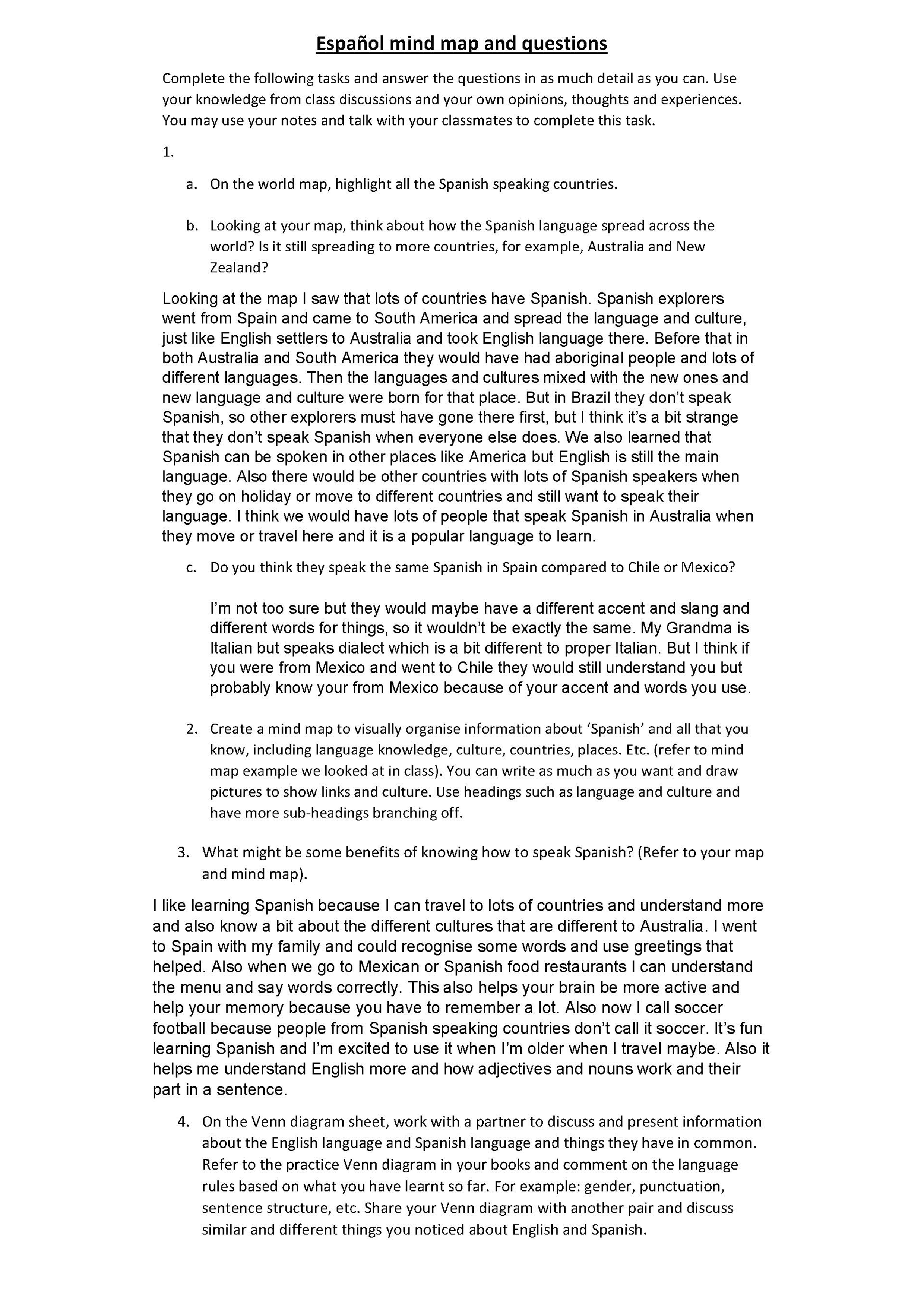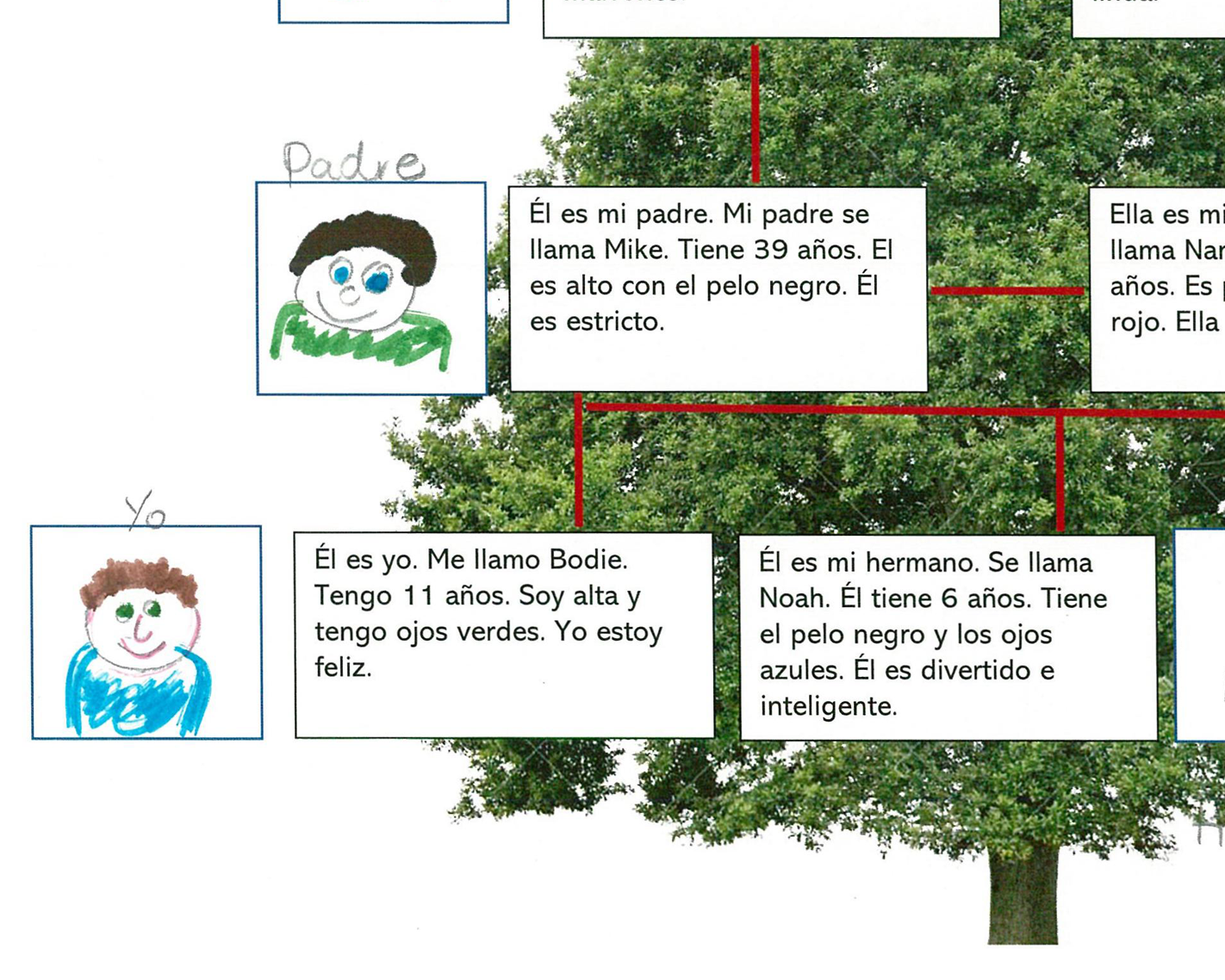By the end of Year 6, students use written and spoken Spanish for classroom interactions, to carry out transactions and to share information about personal interests, relate experiences and express feelings. They use modelled sentence structures to ask and respond to questions (for example, ¿quién?/¿quiénes?, ¿por qué?¿por dónde? sí, por supuesto), seek clarification (for example, ¿Ella dice que apaguemos la computadora?) and give advice (for example, No debes comer tantos dulces). When interacting, students use appropriate pronunciation of Spanish-specific sounds such as ci/ca and ga/gi, and intonation patterns. They gather information relating to language and culture and present it in different formats. They describe characters, experiences and ideas encountered in texts, and create short imaginative texts using structured models and descriptive and expressive vocabulary (divertido, alto, gordo, grande). They use regular and common irregular verbs in present tense (for example, estudio español, voy a mi casa), simple past tense (for example, Ayer comí helado, Fueron a la cafetería) and near future (for example, Voy a ir a la playa, Vamos a comer frutas). Students use pronouns (for example, él/ella nosotros/as ellos/ellas, usted/ustedes/ vosotros/as), prepositions (for example, debajo de, por, al lado de, cerca de), adverbs (for example, muy, poco, bien, mal, lentamente), agreement of nouns and adjectives (for example, gente simpática, juegos divertidos ), and adverbs to mark time (for example, hoy, ayer, mañana, ya, todavía) and place (for example, dentro de, encima de, a la izquierda, a la derecha). They apply rules of punctuation such as question and exclamation marks (for example, ¿cuándo?, ¡cuidado!) and accents (for example, sofá, árbol, música). They translate and interpret short texts, identifying aspects of the Spanish language and culture that are similar or different to their own and create bilingual texts for the classroom and school community. They describe their own experiences of using Spanish and identify ways in which learning and using Spanish' may impact on their own identity.
Students know that Spanish has its own rules for pronunciation and grammar and that language use must be adjusted to suit different contexts, situations and relationships (for example, ¡Hasta pronto Doña Clara! ¡Adiós chicos!). They use metalanguage to explain basic features of language, texts and grammar, making connections with English terms they are familiar with such as ‘verb’, ‘adverb’, ‘noun’ and ‘agreement’. Students identify Spanish as a global language and describe the distribution of communities of Spanish speakers in different countries and regions. They identify ways that languages change through contact with other languages and due to new technologies, and give examples of Spanish words used in English (for example, ‘patio’, ‘chocolate’) and words used in Spanish that are borrowed from other languages (for example, chofer, carné, tenis, golf, corner, kiwi, parking, gol, tiquet, chao ). They reflect on the language they use at home, at school and in the community and identify how young Spanish speakers would use language in the same contexts.







